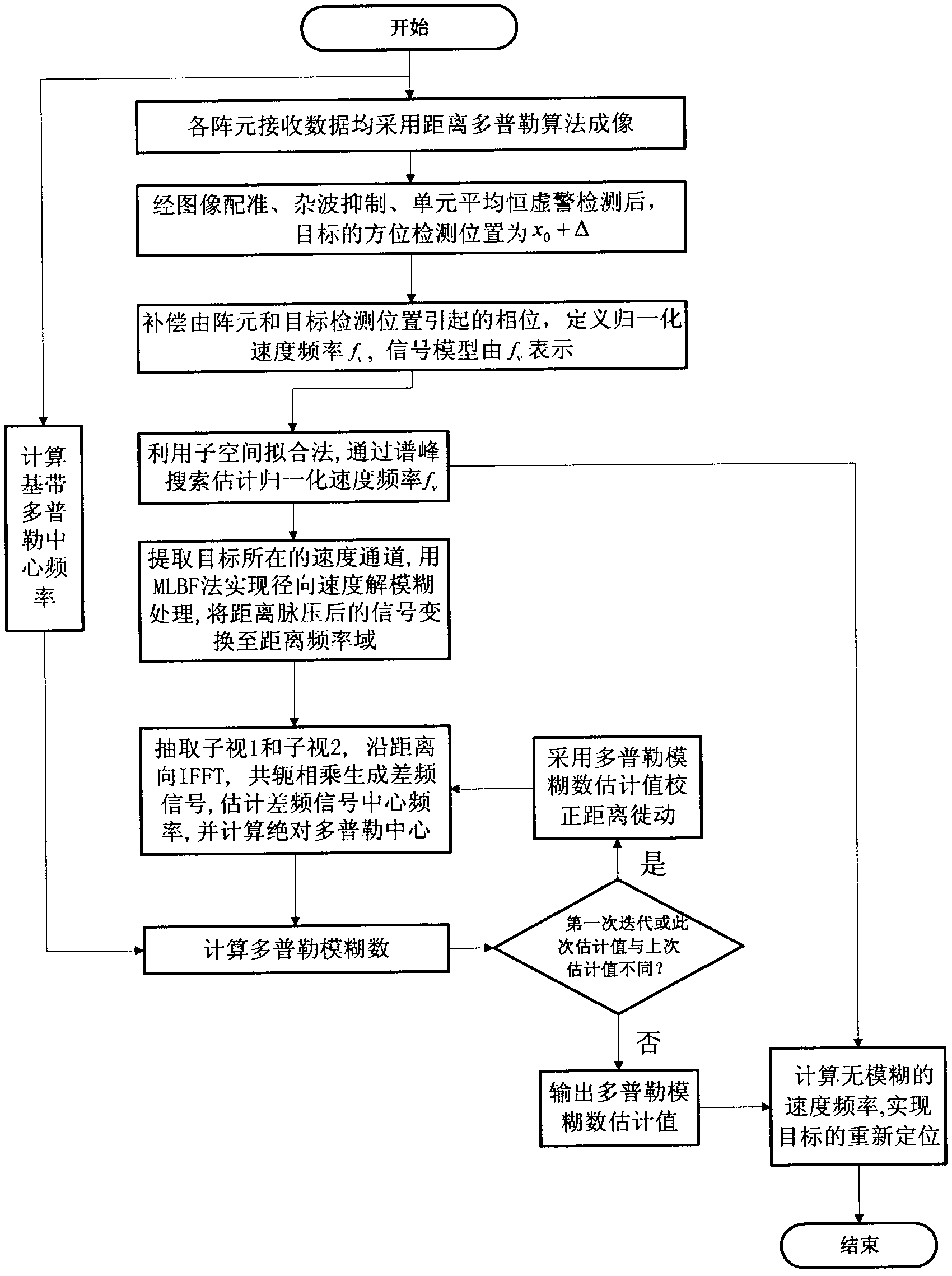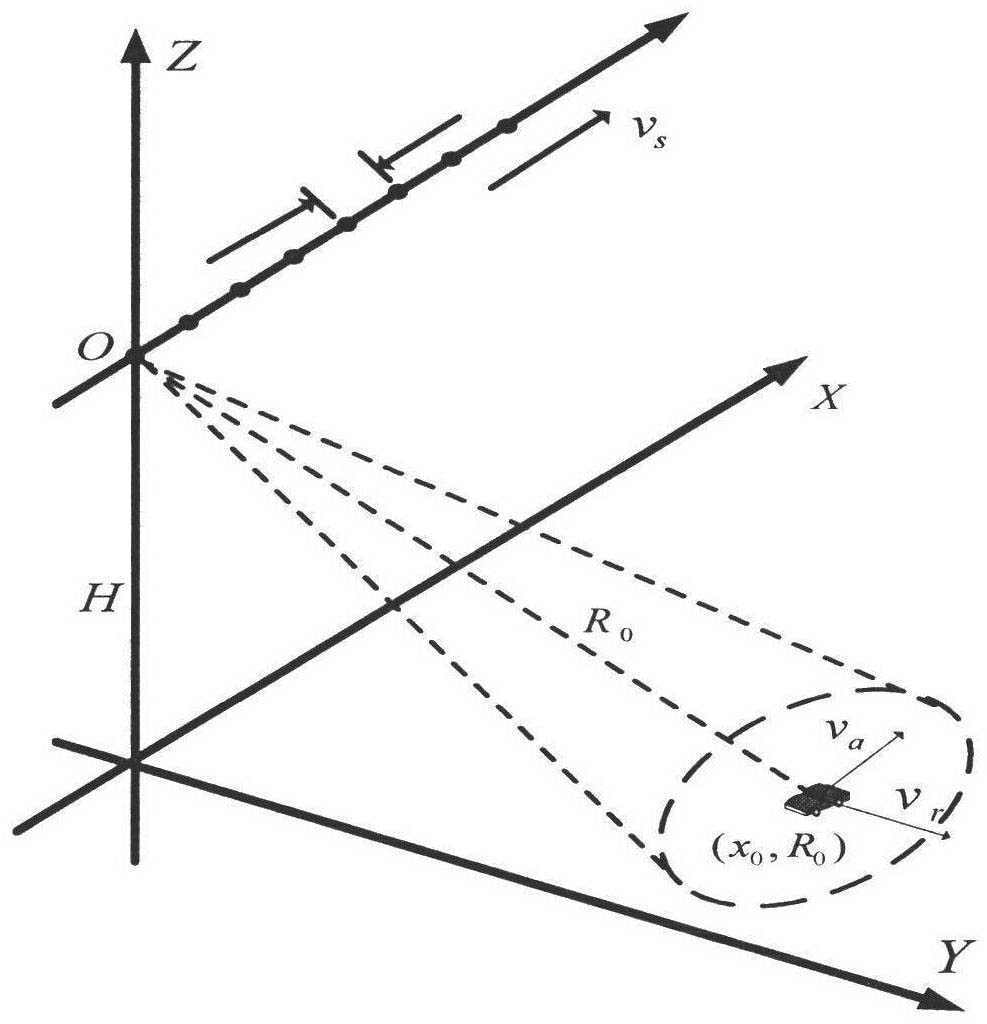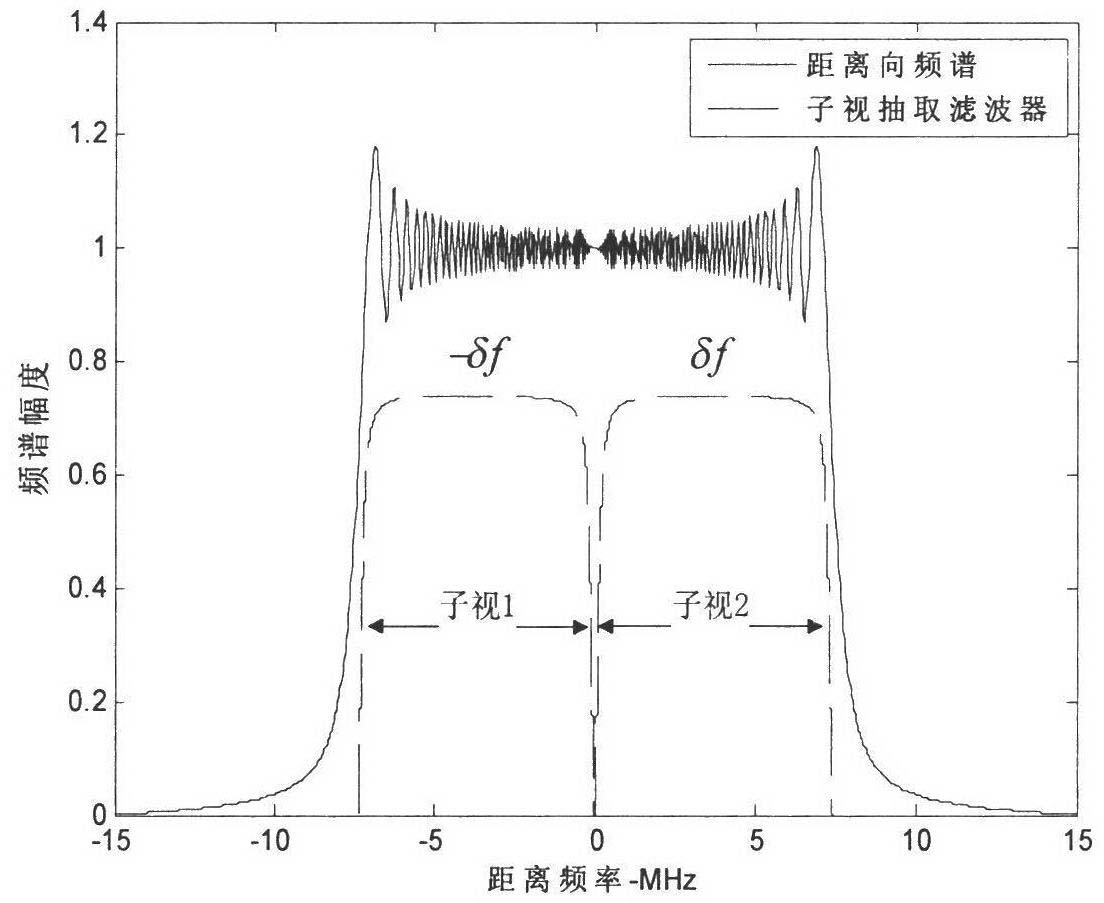Method of moving-target relocation and velocity ambiguity resolution based on velocity synthetic aperture radar (VSAR) system
A moving target and defuzzification technology, applied in the field of signal processing, which can solve the problems of false spectral peaks, low estimation accuracy, and large amount of calculation of the maximization likelihood function.
- Summary
- Abstract
- Description
- Claims
- Application Information
AI Technical Summary
Problems solved by technology
Method used
Image
Examples
Embodiment 1
[0071] Refer below figure 1 The present invention is described in detail:
[0072] The invention is a moving target relocation and velocity defuzzification method based on the VSAR system, which defuzzifies the speed ambiguity of the fast target during the radar detection process of the ground moving target, and needs to improve the detection of the weak slow target for the slow target ability to achieve reorientation of objectives, see figure 1 , including the following steps:
[0073] Step 1: Perform range pulse pressure, range migration correction, and azimuth focusing on the received data of M array elements of the uniform linear array, that is, the received data of each array element is imaged by the range Doppler algorithm to obtain a two-dimensional focused SAR image , the moving target signal is expressed as:
[0074] s ( m , t , t m ...
Embodiment 2
[0118] The moving target relocation and velocity defuzzification method based on the VSAR system is the same as that in Embodiment 1, and the effect of the present invention can be further illustrated by the following simulation experiments.
[0119] 2.1 Experimental conditions
[0120] The schematic diagram of the observation geometry of the VSAR system is as follows: figure 2 As shown, the X-axis represents the azimuth direction, the Y-axis represents the distance direction, and the Z-axis represents the altitude direction. s Fly along the X-axis at a speed of =200m / s. 16 array elements are evenly placed along the flight track, the array element spacing is d=1.5m, at slow time t m = 0, array element 0 is located at (0, 0, H), only array element 0 emits electromagnetic waves, and all array elements receive target echoes. Suppose the target P is located at (x 0 , R 0 )=(0, 6000m), the speed of the slow target P is (v a , v r )=(0,0.5m / s), the speed of fast target (v a...
Embodiment 3
[0128] The method of moving target relocation and velocity defuzzification based on the VSAR system is the same as in Embodiment 1-2, and the calculation of the azimuth offset in step 2 of the present invention includes the following steps:
[0129] Step1: According to the phase information of the moving target signal, the Doppler frequency of the target is:
[0130] f ( t m ) = - 2 λ × dR dt m ≈ - 2 v r λ - ( 2 x 0 - md ) v...
PUM
 Login to View More
Login to View More Abstract
Description
Claims
Application Information
 Login to View More
Login to View More - R&D
- Intellectual Property
- Life Sciences
- Materials
- Tech Scout
- Unparalleled Data Quality
- Higher Quality Content
- 60% Fewer Hallucinations
Browse by: Latest US Patents, China's latest patents, Technical Efficacy Thesaurus, Application Domain, Technology Topic, Popular Technical Reports.
© 2025 PatSnap. All rights reserved.Legal|Privacy policy|Modern Slavery Act Transparency Statement|Sitemap|About US| Contact US: help@patsnap.com



